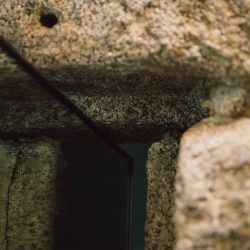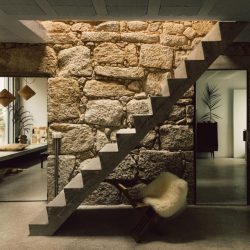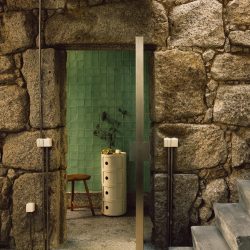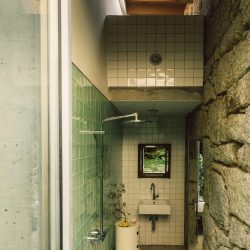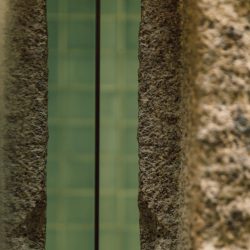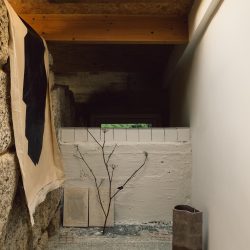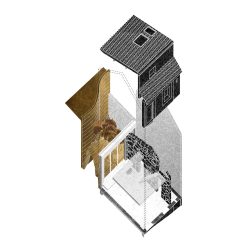
François Leite . photos: © Lucile Casanova
Dominated by its granite church, the Lapa district lies to the north of the historic center of Porto, Portugal. A rocky outcrop recognizable by its urban grid of ilhas, the Lapa district is a network of travessas (narrow streets) and micro-passages serving a complex, dense fabric of popular housing.
Here, derelict buildings stand side by side with the granite outcrops of the old quarry that, in the 18th century, enabled the construction of the district’s emblematic buildings. The project site, left in ruins, is home to an impressive rock mass completely overgrown with ruderal vegetation. A meticulous excavation in search of traces of the past revealed an ancient stone partition wall, which contributes to the cryptic atmosphere of the site, and then of the project.
The project is built around the coexistence of a unified living space – which includes a mezzanine and takes advantage of the double height – and a “patio” marked by the imposing presence of the granite rock. The preservation and integration of the stone wall into the new building’s volumetry bears witness to the existence of an ancient passageway characteristic of ilhas. Present in a variety of forms, stone predominates, reminding us of the history of the site. In summer and winter alike, its inertia has a physical impact on users.
The organization of functions respects the geometry of the existing structure and delimits the area dedicated to the water rooms. The use of azuleijos is a reminder of the game played to blur the boundaries between indoor and outdoor atmospheres.
Imagined in a new dimension, the home turns towards the patio. The boundary between interior and exterior is materialized by an architectural device as an interpretation of the “engawa”, a system of peripheral terraces that characterizes Japanese domestic architecture and illustrates the importance of the threshold.
We chose to invert this system, creating a concrete base on the same level as the patio, wall to wall, which concentrates all the living area’s uses.
This essentially mineral garden is progressively invaded by vegetation that varies the hygrometry and temperatures experienced.
A modular concrete floor supports a sleeping area on the mezzanine, while a concrete floor sanded using the marmolito technique unifies the spaces on the main level: the space is simple to read and reveals a local history that evokes geological sedimentation processes, Lapa’s ecosystem and urban structure, as well as Portuguese know-how through the assembly of materials and construction techniques. Simple materials left unprocessed contribute to the radical nature of the site.
Today, this house-gallery is a place to live, work and exhibit. A showcase for a dynamic and abundant program of young Portuguese and French artists.
_



